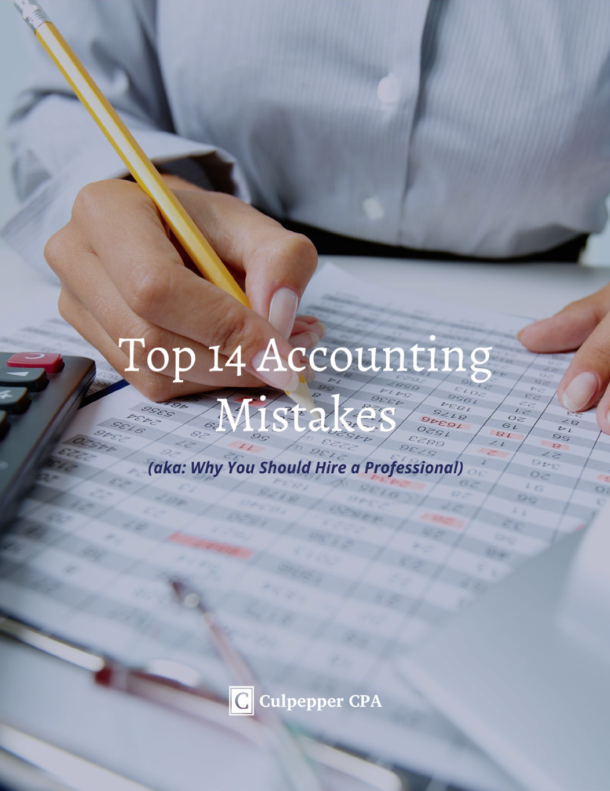At this point, most business owners have heard of the Paycheck Protection Program (PPP). Millions have benefitted from this program, and some even got a second bite at the apple in early 2021 with the PPP Second Draw loan program. But as congress scrambled in 2020 to provide legislation and tax credits to keep the economy afloat, there were many other programs instituted.
It’s easy to overlook some of these credit opportunities, even if you qualified. For example, the credits available for wages paid to those unable to work – due to contracting COVID, being shut down due to government orders, being quarantined for COVID, or even caring for someone infected by COVID – are available for self-employed individuals as well. Even if you don’t technically get paid “wages”, you may still qualify for a substantial tax credit on your 2020 individual tax return.
The Families First Coronavirus Response Act (FFCRA), as amended by the COVID Tax Relief Act, provided Credits for wages paid for Qualified Sick and Family Leave. This Act included Self-Employed individuals in the taxpayers eligible to claim these credits. You just might qualify for one or both of these credits and not even know it, so it’s important to consult your tax advisor for assistance.
SICK LEAVE CREDIT
To qualify for the Sick Leave Credit, you must meet two separate thresholds:
First, you carried on a trade or business within the meaning of code section 1402 – meaning you were a sole proprietor (Schedule C filer) or a partner in a partnership where your income was subject to self-employment tax rules. The credit is based on an income allocation, so if your total self-employment activities resulted in a loss, you may not qualify.
Second, you met the same qualifications that an employee had to meet under the Emergency Paid Sick Leave Act OR the Emergency Family and Medical Leave Expansion Act, meaning that if you were an employee for someone other than yourself you would have qualified for leave wages under one of those Federal Acts.
The Sick Leave Credit for self-employed individuals is calculated at two different rates, depending on whether you were impacted personally, or were impacted due to caring for another individual. The larger sick leave credit – up to ten days of eligibility – is for an individual unable to work or telework for ONE of the following reasons:
- Subject to a federal, state, or local quarantine or isolation order related to COVID
- Advised by health care provider to self-quarantine due to COVID
- Experienced COVID symptoms and sought medical diagnosis
The amount of the credit is the lesser of $511 per day or your adjusted business income divided by 260 (the average daily self-employed income).A smaller Sick Leave Credit is available for an eligible self-employed individual unable to work because the individual:
- Cared for an individual that met one of the criteria above
- Cared for a child if the child’s school or place of care was closed due to COVID
- Experienced other similar conditions specified by the Secretary of Health and Human Services
When caring for an individual, the credit is the lesser of 67% of the average daily self-employment income or $200 per day. The credit under both of these situations is limited to 10 days. The maximum credit for someone that made over $132,860 in adjusted self-employment income would be $5,110.
FAMILY LEAVE CREDIT
The Family Leave Credit – separate from the Sick Leave Credit – is for individuals unable to work due to certain coronavirus-related care provided for a son or daughter from April 1, 2020 – December 31, 2020. This credit is limited to 50 days and can be taken along with the Sick Leave Credit; however, any days used for the Sick Leave Credit are excluded from the calculation of the Family Leave Credit.
The credit is calculated as the lesser of 67% of the average daily self-employment income or $200 per day. For example, someone with $46,175 of adjusted self-employed income would receive 67% of 46,175/260 or $119 per day ($178 *.67 = $119). That amount, up to 50 days, would result in a $5,950 tax credit.
To qualify for this credit, a self-employed individual’s son or daughter must be under the age of 18 OR incapable of self-care due to mental or physical disability.
It’s also important to note that if you received wages from a separate employer, your eligible credit is adjusted to reflect the coverage under the employer’s plan. This means you can’t take the credit as both an employee and as a self-employed individual.
Additionally, if your 2020 income was adversely affected, there are provisions to look back at 2019 income levels for the credit.
BOTTOM LINE
2020 was full of chaos in many ways. Tax legislation was the primary tool Congress used in attempts to offset the economic impact of the pandemic, so there were massive amounts of new opportunities implemented.
It was nearly impossible for everyone to keep up with all of these, so be sure to consult your tax advisor for assistance in determining your eligibility for all of these new opportunities – including the Sick and Family Leave Credit.
Culpepper CPA provides a full range of in-depth tax planning and consulting services and can help you proactively manage your tax liability. Feel free to contact us today if we can help you with your tax situation.


